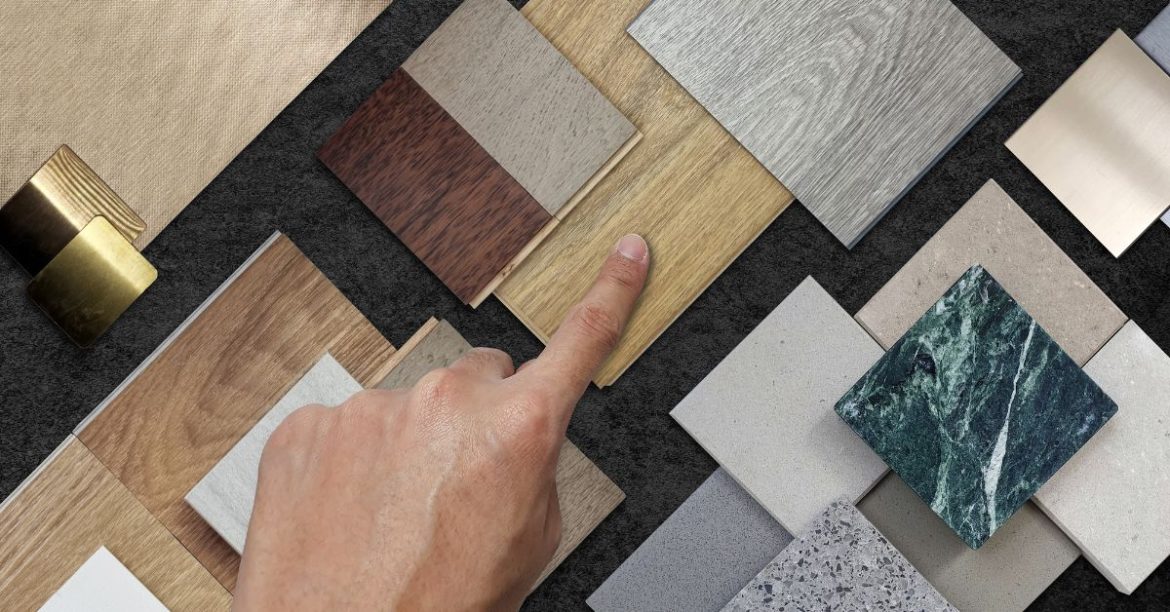Table of Contents
When it comes to upgrading your home, choosing the right kind of flooring is a decision that combines style, durability, and budget considerations. Among the most popular options are laminate and vinyl flooring. Both offer unique benefits, but which is best for your needs?
In this guide, we’ll break down the differences between laminate and vinyl flooring, explore their pros and cons, and provide expert tips to aid you make the best choice for your home.
What Are Laminate and Vinyl Flooring?
Laminate Flooring
Laminate flooring is an artificial product that resembles the overall appearance of real stone or wood. It consists of multiple layers:
- Fiberboard Core: The core layer provides stability and strength.
- Printed Image Layer: This gives laminate its realistic wood or stone appearance.
- Wear Layer: A protective coating that resists scratches and wear. Laminate is commonly used in living rooms, bedrooms, and areas with moderate foot traffic. Its affordability and aesthetic appeal make it a popular choice.
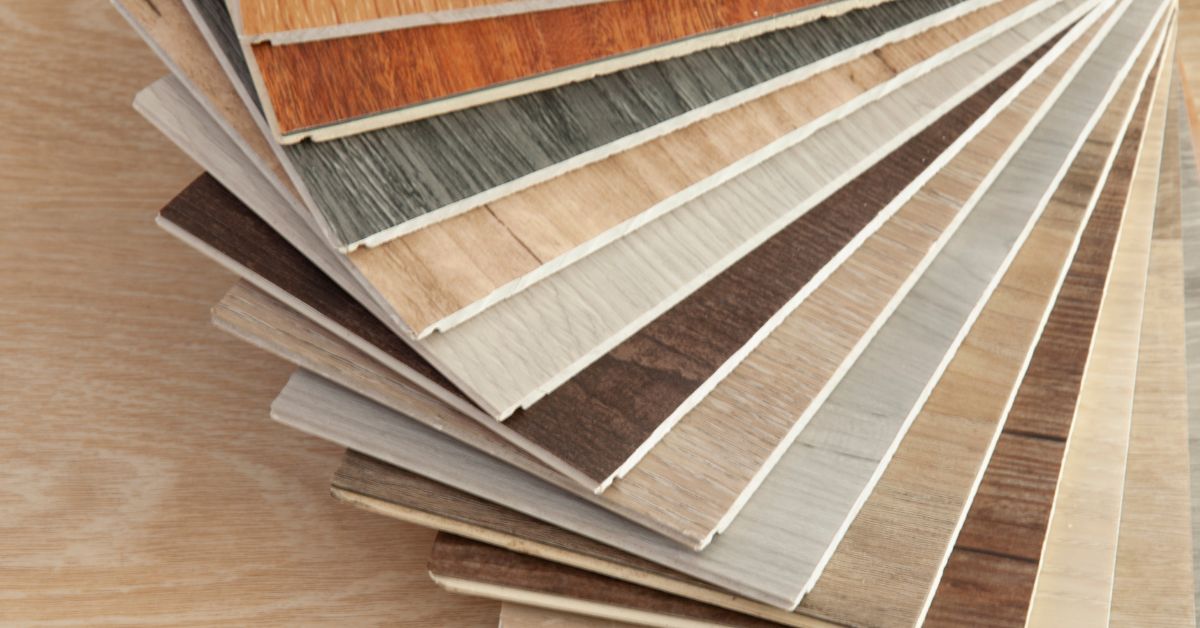
laminate flooring
Vinyl Flooring
Vinyl flooring is made from 100% synthetic materials, primarily PVC. It’s available in planks, tiles, or sheets and offers versatility in design.
- Durability: Vinyl is waterproof and highly resistant to wear.
- Applications: It is suitable for kitchens, bathrooms, basements, and other high-moisture areas. Vinyl’s flexibility and durability make it a favorite for homes with pets, kids, or high traffic.
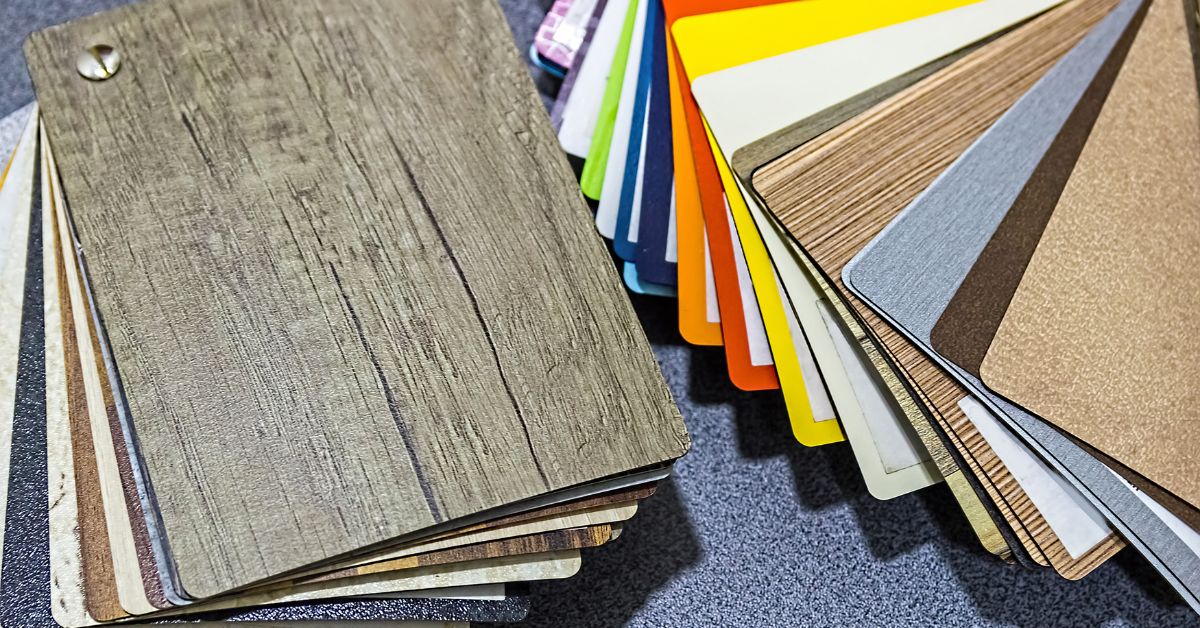
vinyl flooring
Key Differences Between Laminate and Vinyl Flooring
Here are the key differences between laminate and vinyl flooring:
Material and Construction
- Laminate: It is Made from engineered wood with a fiberboard core. This composition gives it a natural, wood-like feel but makes it vulnerable to water damage if not properly sealed.
- Vinyl: It is 100% synthetic and waterproof by design. Its multi-layered construction often includes a rigid core, wear layer, and printed design layer. This design ensures high durability and resistance to moisture.
Appearance and Texture
- Laminate: Laminate uses high-definition printing technology to mimic the look and texture of real wood. The textured finishes can range from smooth to embossed for a more natural feel.
- Vinyl: It offers an extensive range of designs, including wood, stone, and abstract patterns. Vinyl’s printing technology allows for highly realistic visuals, making it a versatile choice for various aesthetics.
Durability and Lifespan
- Laminate: Laminates are durable and resistant to scratches and wear in dry areas. However, its lifespan can be compromised in high-moisture environments or under heavy foot traffic.
- Vinyl: It offers superior durability, especially in moisture-prone areas. It can withstand high traffic, making it suitable for homes with kids, pets, or frequent gatherings. High-quality vinyl can last up to 20 years or more with proper care.
Water Resistance
- Laminate: While resistant to occasional spills, laminate is not fully waterproof. Prolonged exposure to water can cause swelling or warping, making it less ideal for bathrooms or kitchens.
- Vinyl: Vinyl is fully waterproof, so it’s a great choice for places like bathrooms, kitchens, basements, and laundry rooms.
Comfort and Feel
- Laminate: Laminate feels warm when you walk on it because it’s made from wood materials. It feels similar to real hardwood flooring, making it a comfortable and cozy option for rooms like living areas.
- Vinyl: It is softer and slightly more cushioned, especially if installed with an underlayment. However, it can feel cooler to the touch compared to laminate.
Maintenance and Cleaning
- Laminate: It requires regular sweeping and occasional damp mopping. Excess water should be avoided to prevent damage. Specialized laminate cleaners can help maintain its finish.
- Vinyl: It requires extremely low maintenance. It can be cleaned with a simple mop, broom, or vacuum. Its waterproof nature ensures that spills and stains are easy to manage.
Installation
- Laminate: Laminate flooring is usually installed with click-and-lock systems, which makes it popular for DIY projects. However, it needs an underlayment to provide stability and protect against moisture.
- Vinyl: Vinyl flooring can be installed in different ways, such as peel-and-stick, glue-down, or click-and-lock. It is flexible, making it possible to install over existing floors in many situations.
Cost Comparison
- Laminate: It is generally more affordable. This makes it a budget-friendly choice for homeowners seeking a natural look.
- Vinyl: It might cost a bit more at first, but its strong and waterproof design often makes it a better choice over time, especially in places with a lot of moisture.
Heat Resistance
- Laminate: It can warp or fade under extreme heat or direct sunlight. It’s not ideal for areas with significant temperature fluctuations.
- Vinyl: It is better suited for varying temperatures and can be installed over radiant heating systems without issue.
Care
- Both types require routine cleaning, but laminate needs extra care to avoid moisture exposure. Vinyl is more forgiving and can handle heavier cleaning routines without damage.
Durability
- Laminate: It is scratch-resistant but can chip or dent under heavy furniture or impacts.
- Vinyl: It is highly durable and resistant to scratches, stains, and impacts. This makes it a long-lasting option for active households.
Installation Areas
- Laminate: It is best for dry spaces like bedrooms, living rooms, and dining areas.
- Vinyl: It is suitable for virtually any area of the home, including high-moisture spaces like kitchens, bathrooms, and basements.
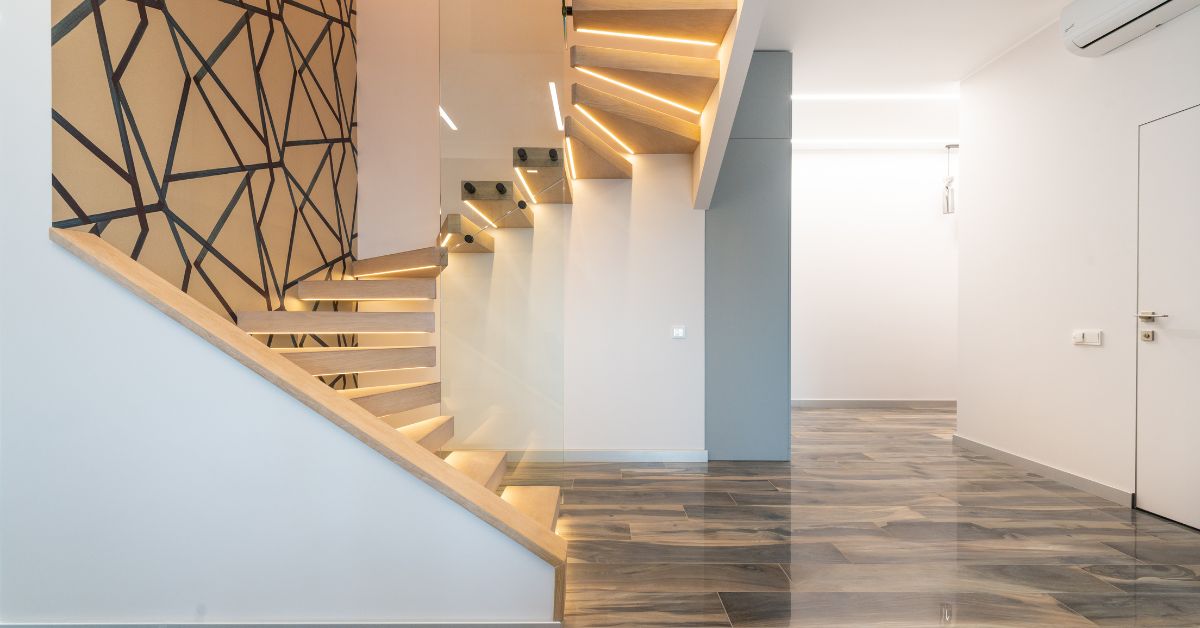
laminate vs vinyl flooring
Pros and Cons of Laminate Flooring
Pros:
- Affordability: Laminate is one of the most budget-friendly flooring options, making it accessible for homeowners looking to upgrade on a budget.
- Visual Appeal: Advanced printing technology allows laminate to mimic the appearance of real wood or stone convincingly.
- Ease of Installation: The click-and-lock systems make it a popular choice for DIY enthusiasts, saving on installation costs.
- Variety of Styles: It is present in a various range of colors, patterns, and textures to suit various interior designs.
Cons:
- Moisture Sensitivity: While laminate is resistant to occasional spills, it can swell or warp with long-term exposure to water, limiting its use in kitchens and bathrooms.
- Durability Limitations: Heavy furniture or sharp objects can cause scratches or dents, reducing its lifespan in high-traffic areas.
- Noise Levels: Laminate can produce a hollow sound underfoot without proper underlayment. This makes it less appealing for some.
Pros and Cons of Vinyl Flooring
Pros:
- Waterproof Nature: Vinyl flooring’s complete resistance to water makes it ideal for bathrooms, kitchens, basements, and laundry rooms.
- Design Flexibility: With endless design options, vinyl can mimic wood, stone, or even intricate patterns, offering creative freedom for homeowners.
- Low Maintenance: Vinyl requires minimal upkeep, with easy cleaning methods that make it a practical option for households that are busy.
- Durability: High resistance to scratches, stains, and wear ensures a long-lasting product, even in high-traffic areas.
- Soft Underfoot: Vinyl provides a slightly cushioned feel, enhancing comfort, especially for prolonged standing.
Cons:
- Luxury Factor: Despite its versatility, some homeowners feel that vinyl lacks the premium aesthetic of natural wood or high-end laminate.
- Environmental Concerns: Certain vinyl products may emit volatile organic compounds (VOCs), which can impact indoor air quality. However, low-VOC options are available.
- Repair Challenges: While vinyl is durable, repairing damaged sections can be more difficult compared to laminate, especially for glued-down installations.
Factors to Consider When Choosing Laminate vs Vinyl Flooring
Here are the factors to consider when choosing between laminate and vinyl flooring.
a. Room Type
- Vinyl Flooring: It is ideal for areas with high moisture, such as kitchens, bathrooms, basements, and laundry rooms. Its waterproof nature ensures it can withstand spills and humidity without damage.
- Laminate Flooring: It is best suited for dry areas like bedrooms, living rooms, and home offices. It adds warmth and elegance to spaces where moisture is not a concern.
b. Lifestyle
- Families with Kids or Pets: Vinyl is highly durable, resistant to scratches, and easy to clean, making it the preferred choice for households with active children or pets.
- Quiet and Cozy Spaces: Laminate’s warmth and authentic wood feel make it perfect for spaces where comfort and aesthetics take priority, such as bedrooms or reading nooks.
c. Budget
- Initial Costs: Laminate is generally more affordable upfront, making it a budget-friendly option for renovations.
- Long-Term Value: Vinyl may cost slightly more initially but provides better longevity and performance in moisture-prone or high-traffic areas, potentially saving costs on repairs or replacements.
d. Aesthetic Preferences
- Authenticity: Laminate’s textured finishes and realistic wood patterns offer a more natural look, ideal for those seeking a traditional or rustic aesthetic.
- Versatility: Vinyl comes in a wider variety of designs, from wood and stone to unique patterns, catering to modern and eclectic styles.
e. Installation Preferences
- DIY-Friendly: Both laminate and vinyl offer DIY installation options. Laminate’s click-and-lock systems are straightforward, while vinyl provides flexibility with peel-and-stick, glue-down, or click-and-lock methods.
- Complex Spaces: Vinyl is easier to install in irregularly shaped rooms or areas with fixtures, thanks to its flexibility and thinner profile.
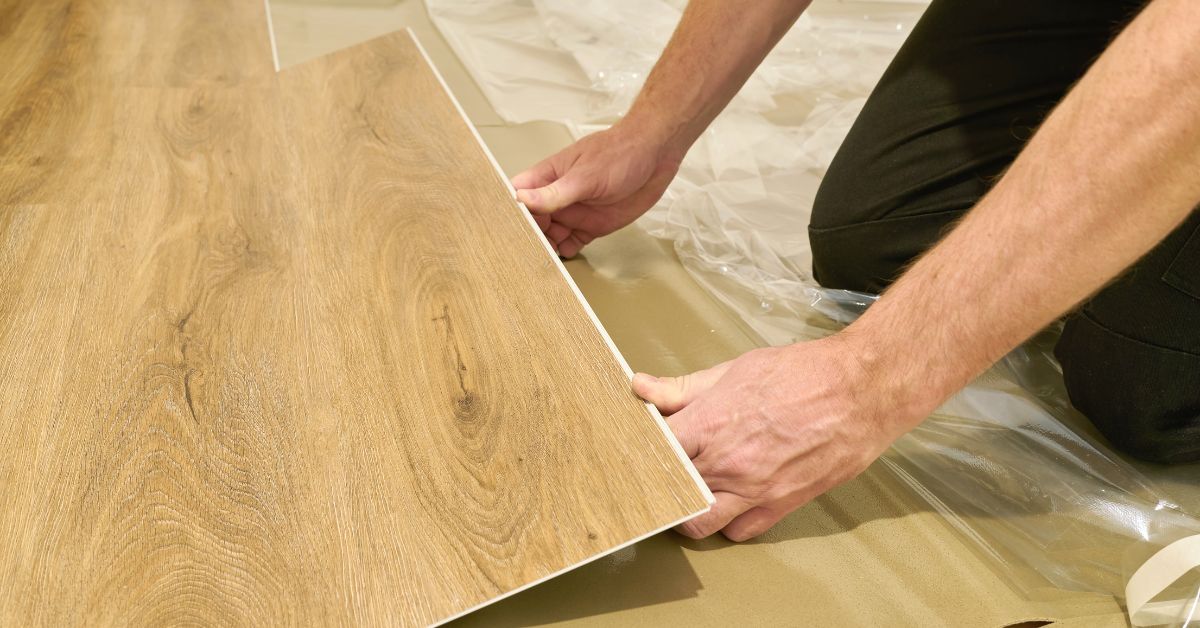
laminate vs vinyl flooring
Expert Tips for Choosing the Best Flooring Option
Here are the expert tips for choosing the best flooring option.
Assess the Needs of Each Room in Your Home
Think about what each room needs. Wet places like bathrooms or basements are better with waterproof vinyl flooring. Dry rooms like bedrooms can use laminate for a cozy feel. Also, consider how much people walk in the room, how much sunlight it gets, and what the room is used for.
Test Samples to Ensure They Match Your Design Vision
Before choosing a flooring type, get samples of both laminate and vinyl to see how they look and feel in your home. Check them in both natural and artificial light to make sure they match your decor. You can also test how strong they are by scratching or dropping small items on the samples.
Consult Professionals for Installation
If you’re unsure about installation methods or which flooring type suits your needs, seek advice from flooring experts. Professionals can provide insights into the best products for your budget and lifestyle, ensuring a seamless installation process and a long-lasting result.
Conclusion
Laminate and vinyl flooring are both great choices to improve your home’s look and use. Laminate works well for giving rooms a cozy, wood-like feel, especially in dry areas. Vinyl is strong and waterproof, making it perfect for places with moisture. Think about your room, how you live, and the style you like to pick the best option. For extra help or samples, talk to a flooring expert today and choose with confidence!
FAQs
Which is more eco-friendly, laminate or vinyl flooring?
Laminate is often more eco-friendly due to its wood-based core, but some vinyl products are recyclable.
Can laminate or vinyl flooring be installed over radiant heating?
Yes, but vinyl performs better under heat conditions.
Which option increases home resale value?
Laminate may have a slight edge due to its resemblance to hardwood.
How do you clean and maintain each type of flooring?
- Laminate: Use a damp mop and avoid standing water.
- Vinyl: Simple sweeping and occasional mopping.
